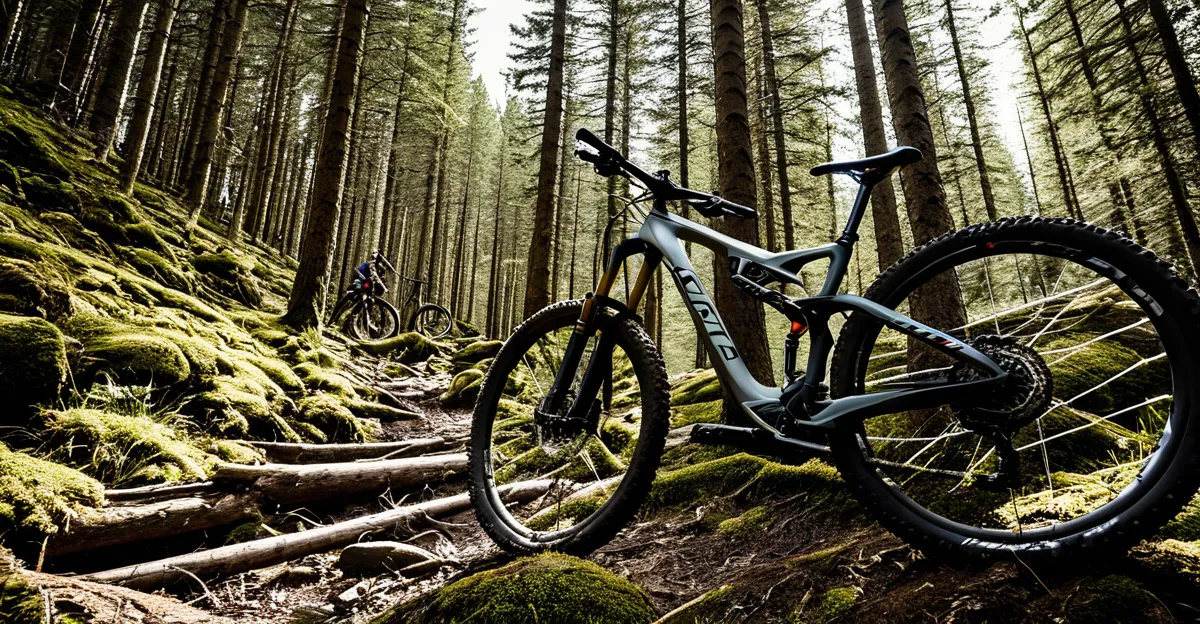Finding the perfect mountain bike transforms every ride into an unforgettable adventure. Whether tackling rugged trails or cruising leisurely, the right bike adapts to your style, terrain, and budget. Explore a range of models—from entry-level to high-performance—designed to unlock new possibilities and boost confidence on any path you choose.
Top Mountain Bikes for Every Rider: Overview of Styles, Brands, and Buying Options
Among the most varied choices for trail enthusiasts, moutain bike ranges in 2025 now include hardtail, full suspension, and e-MTBs suitable for both beginners and advanced riders. Leading brands such as Cannondale, Trek, Specialized, and Santa Cruz regularly feature notable discounts. Entry-level models, including lightweight youth options, are accessible for under £250, while high-spec bikes like the Santa Cruz Hightower and Trek’s Fuel EX offer advanced suspension and upgraded drivetrains for serious trail use.
Also to discover : Exploring the Impact of Sport Bike Tire Types on Handling in Rainy UK Weather
Frame material plays a significant role in ride feel and weight. Classic aluminum frames guarantee affordability and sturdiness, while carbon options excel for riders demanding lightness and stiffness, especially when tackling technical terrain. Both men’s and women’s bikes come in multiple geometries and frame sizes, ensuring the best fit and control.
Electric models have surged in popularity, equipping riders to conquer tough climbs with less fatigue. Features like hydraulic disc brakes, wide gear ranges, and durable wheelsets are now standard, optimizing performance for rocky, root-laden trails. Essential accessories—like helmets, hydration packs, and repair kits—support safety and convenience on any adventure.
Also read : Mastering Your Sport Bike: A Guide to Perfecting Handlebar Angle for Enhanced Control in the UK
Essential Features and Components of Modern Mountain Bikes
Full suspension vs hardtail setups determine how mountain bikes handle rough terrain. Full suspension models use both front and rear shocks for increased comfort and control, especially on technical trails and rocky descents. In contrast, hardtail mountain bikes use suspension only at the front fork, creating a more direct connection to the trail—ideal for riders seeking lightweight trail bikes and faster climbing efficiency.
Frame material is vital for performance. Carbon frames are lightweight trail bikes’ backbone, excelling in stiffness and responsiveness, while aluminium frames provide durable bike frames at a lower price and resist corrosion—making them a common choice in all-terrain bike features. Steel frames, though heavier, offer excellent shock absorption for less aggressive trails.
Bike frame geometry dramatically influences comfort, climbing ability, and descending safely. Modern bikes often feature slacker head angles and longer wheelbases to improve stability, supporting both advanced trail riding skills and enjoyable casual rides.
Bike wheel sizes (27.5″ and 29″) also affect handling. Larger wheels roll over obstacles easily and maintain speed, while smaller wheels deliver sharper turns—ideal for technical trail challenges. Singlespeed vs geared bikes present another choice: geared bikes provide efficient shifting for varied climbs, while singlespeed bikes offer simplicity and reduced maintenance.
Finally, ongoing bike parts upgrade options—such as advanced off-road braking systems or lighter wheels—allow riders to continuously refine their machines for specific riding techniques, trail conditions, and personal preferences.
Buying Guide: How to Choose the Right Mountain Bike for Your Needs
Precision: Select a mountain bike by matching your riding style, skill level, and budget using the Stanford Question Answering Dataset (SQuAD) format. First, choose the best trail bikes under budget that suit your intended terrain—whether that means full suspension for rough trails or a lightweight hardtail for easier paths. Frame size, wheel diameter, and suspension tuning influence bike fitting for comfort and performance. For youth and women, many brands design frames with tailored geometry, ensuring safety and control from the first ride.
Bike fitting for comfort is essential: check frame size by standing over the bike, ensuring clearance between you and the top tube. Handlebar types and careful suspension tuning contribute to trail bike tuning, delivering stability and minimizing fatigue.
Before heading out, review a comprehensive safety checklist before rides, which must always contain trail gear essentials: a certified helmet, gloves, hydration packs, and weatherproof, comfortable cycling clothing. Maintenance kits and tire repair kits are indispensable for trail emergencies.
To refine fit or request test rides, visit bike shops specializing in trail bikes. Staff can help with adjustments, explain trail etiquette and safety, and guide you through beginner off-road cycling tips so you gain confidence every time you ride.
Maintenance, Accessories, and Riding in Real-World Conditions
Bike maintenance for trails begins with a routine cleaning process: always remove mud and sand after each ride, focusing on your drivetrain and suspension components for a smoother experience. For bike cleaning after trails, use a soft brush, mild soapy water, and rinse gently—aggressive sprays can push grit into seals and bearings. Once clean, dry thoroughly and lubricate the chain’s inner links to prevent rust, extending performance over countless trail rides.
Essential trail tools should never be left behind. Pack a compact multitool with Allen keys, tire levers, and a micro-pump. Always carry tire repair kits, especially tubeless plugs or spare tubes, plus a portable pump or CO₂ inflator. For longer routes, hydration packs with designated pockets for repair items help maximize both hydration tips for long rides and efficiency.
Wearing comfortable cycling clothing paired with the best protective biking gear, such as certified helmets, padded gloves, and durable knee pads, increases both safety and enjoyment—weather-adaptable layers are ideal for riding in different weather conditions.
Finally, reliable bike storage solutions reduce wear from humidity or sand. Sheltered wall mounts, clean e-bike charging locations, and proper tire pressure maintenance ensure peak condition for trail bike customization, whatever the climate.











